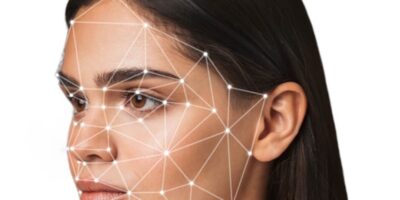Intel’s RealSenseTM ID access solution now at Rutronik
With Intel’s RealSenseTM ID, Rutronik offers a facial recognition solution based on state-of-the-art image processing technology and AI. It provides highly reliable authentication regardless of factors such as skin colour or lighting conditions. The combination of an active stereo depth sensor and a specialised neural network guarantees an intuitive and secure solution, that continues to optimise itself through constant learning processes and recognises people even if they change over time. Facial recognition has protective mechanisms to prevent unauthorised use. Intel’s solution is therefore predestined for use at access controls, ATMs or kiosks.
The Intel RealSenseTM ID F450 is an embedded facial authentication module based on a closed-loop real-time operating system (RTOS) with neural network algorithms. It integrates the optical components and processing hardware to integrate high-performance, localised facial authentication capabilities into new and existing product types. The Intel RealSenseTM ID F450 Module is ideal for custom designs with an excellent price-performance ratio and tighter integration possibilities in various form factors. The Intel RealSenseTM ID F455 is a ready-to-use peripheral device with the F450 module already integrated, perfect for integration out-of-the-box.
An active depth sensor projects an infrared pattern that enables accurate identification even in poor lighting conditions and authenticates in less than a second. The camera allows interaction from different angles for people between 120 cm and 190 cm at a distance of 55 cm, making it easy to use for children to tall adults. Due to Anti-spoofing the person in front of the camera is recognised with 99.75% certainty. The authentication solution thus protects against attacks using photos, videos or 3D masks.
The various components interlock in such a way that they reliably guarantee security, data protection, reliability and speed. Facial recognition does not store images of faces, but captures facial impressions that are unique to a person’s face – similar to fingerprints – and uses AI software to create a match with a false acceptance rate (FAR) of 1:1,000,000. To protect privacy, however, the facial impressions cannot be reconstructed into a face.




